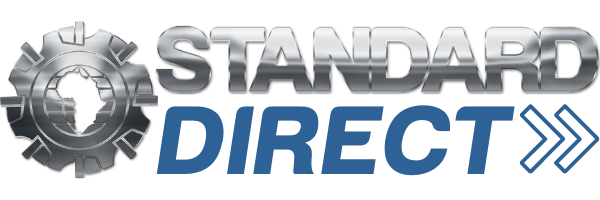Miraco 3d Scanner now under $2000...
Miraco 3d Scanner now under $2000...
Standard SSR-50 Section Roller with Hydraulic Top Roll:
A Section Roller with a Hydraulic Top Roll is a machine used in the metal fabrication industry to bend and shape large sheets of metal. The machine consists of a base, an upper roll that is powered by a hydraulic cylinder, and a lower roll that is fixed in place. The metal is placed between the upper and lower rolls, and the hydraulic cylinder is used to apply pressure to the upper roll, bending the metal to the desired shape. The section roller with hydraulic top roll is typically used for larger, thicker sheets of metal and has a high degree of precision and control.
Main features:
Delivery is 8-12 Weeks from Deposit
To use a Section Roller with a Hydraulic Top Roll, follow these steps:
Set the machine up according to the manufacturer's instructions. This typically involves adjusting the position of the lower roll and the spacing between the upper and lower rolls to match the size and thickness of the metal to be bent.
Place the metal between the upper and lower rolls, making sure that it is centered and aligned with the rolls.
Secure the metal in place by adjusting the clamping system on the machine, if applicable.
Adjust the angle of the upper roll by using the hydraulic cylinder, this will allow you to set the desired angle of the bend.
Turn on the machine and engage the drive system to begin the bending process.
Keep an eye on the metal as it is bent to ensure that it is not being distorted or deformed in any way. Adjust the angle of the upper roll as needed to achieve the desired shape.
Once the metal has been bent to the desired shape, turn off the machine and remove the metal from the rolls.
Always make sure the machine is well lubricated, and in case of any malfunction, shut the machine down and contact the manufacturer for maintenance.
Note: It's always recommended to read the manual and get proper training before operating the machine.
*Information shown may differ or change without warning*
Machine Specialists
International Sales
Online Support
Superiors Quality Products
Standard SSR-50 Section Roller with Hydraulic Top Roll:
A Section Roller with a Hydraulic Top Roll is a machine used in the metal fabrication industry to bend and shape large sheets of metal. The machine consists of a base, an upper roll that is powered by a hydraulic cylinder, and a lower roll that is fixed in place. The metal is placed between the upper and lower rolls, and the hydraulic cylinder is used to apply pressure to the upper roll, bending the metal to the desired shape. The section roller with hydraulic top roll is typically used for larger, thicker sheets of metal and has a high degree of precision and control.
Main features:
Delivery is 8-12 Weeks from Deposit
To use a Section Roller with a Hydraulic Top Roll, follow these steps:
Set the machine up according to the manufacturer's instructions. This typically involves adjusting the position of the lower roll and the spacing between the upper and lower rolls to match the size and thickness of the metal to be bent.
Place the metal between the upper and lower rolls, making sure that it is centered and aligned with the rolls.
Secure the metal in place by adjusting the clamping system on the machine, if applicable.
Adjust the angle of the upper roll by using the hydraulic cylinder, this will allow you to set the desired angle of the bend.
Turn on the machine and engage the drive system to begin the bending process.
Keep an eye on the metal as it is bent to ensure that it is not being distorted or deformed in any way. Adjust the angle of the upper roll as needed to achieve the desired shape.
Once the metal has been bent to the desired shape, turn off the machine and remove the metal from the rolls.
Always make sure the machine is well lubricated, and in case of any malfunction, shut the machine down and contact the manufacturer for maintenance.
Note: It's always recommended to read the manual and get proper training before operating the machine.
*Information shown may differ or change without warning*
